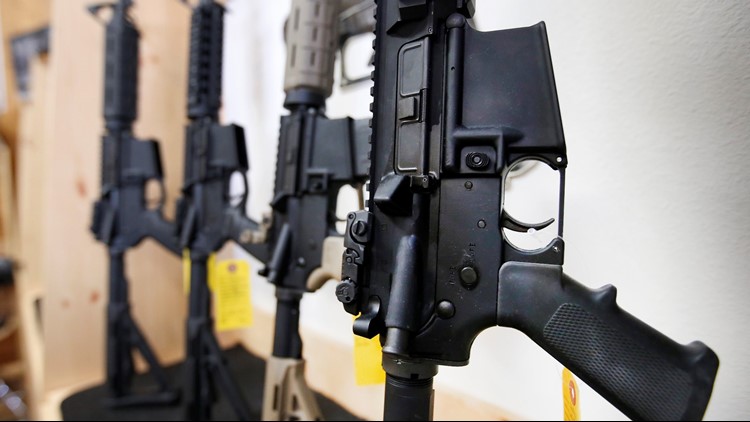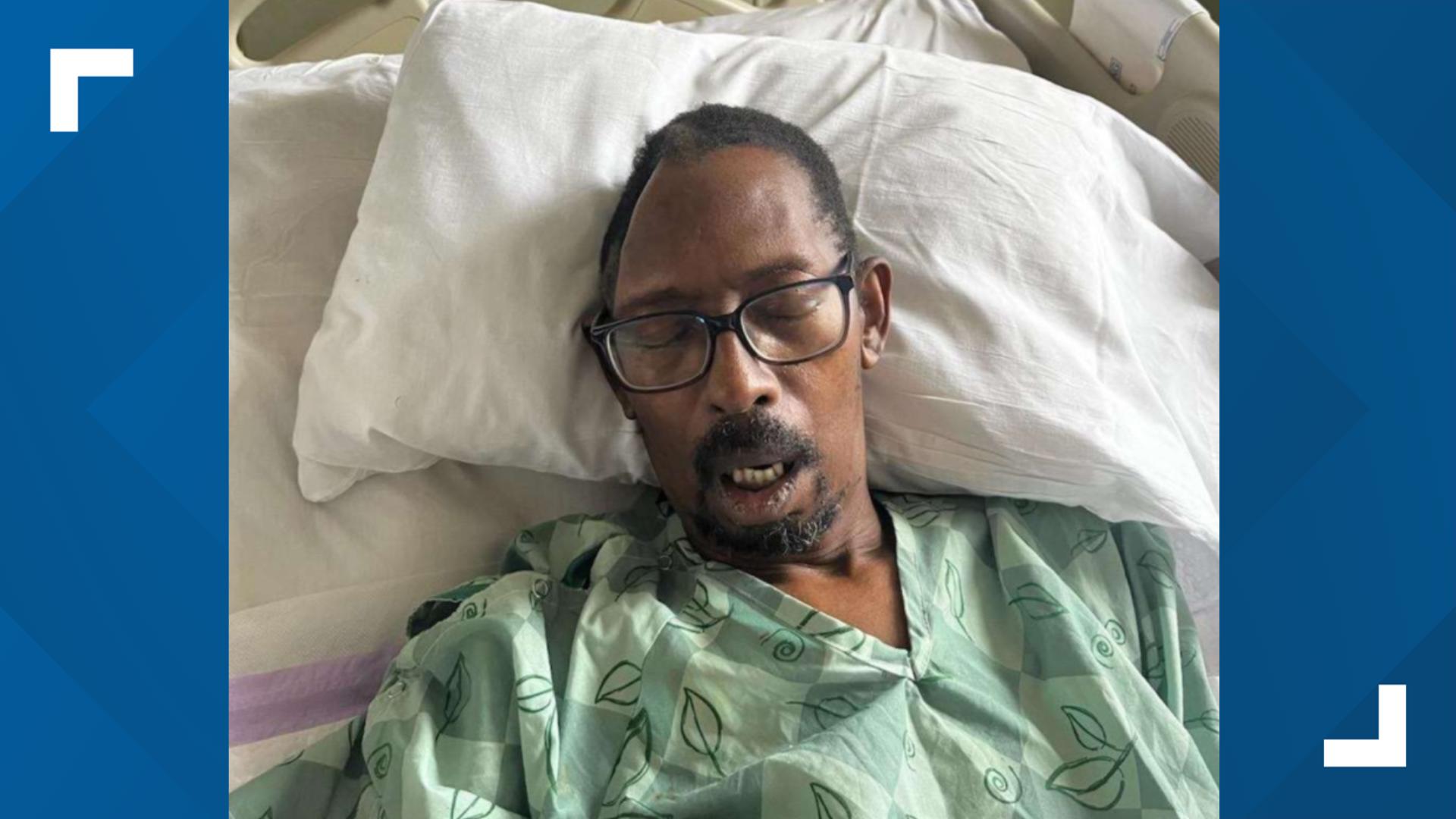As the debate over guns rages, a study out Friday underlined one key fact: There is little research in recent years to show whether gun policies can stem the bloodshed.
The RAND Corp., an influential think tank, created a research initiative called Gun Policy in America to provide a factual basis for the debate about gun policies to determine which work and which don’t.
But in reviewing available research, RAND found a lack of studies that documented laws reducing violence rather than just coinciding with the results. A review of thousands of studies yielded 62 with causal results about gun policies, only two-thirds of them in the last 15 years.
The reason: Federal funding for gun studies largely dried up 20 years ago. Annual spending bills in Congress since 1996 say no funding “at the Centers for Disease Control and Prevention may be used to advocate or promote gun control.”
The shooting deaths of 17 people at a Florida high school on Feb. 14 rekindled the nationwide conversation about gun policies. President Trump, lawmakers in Congress and Florida Gov. Rick Scott and his state Legislature are each grappling over whether more restrictive laws are needed.
“We were hoping there would be a bigger kernel of truth around which people could start circling,” said Andrew Morral, a senior behavioral scientist at RAND who led the initiative. “It’s a little disappointing that there wasn’t more that we could find in that way.”
RAND's two-year, $1 million initiative found some results that suggested background checks and prohibitions associated with mental illness reduce homicides. Concealed-carry and stand-your-ground laws seemed to increase violent crime or homicides, according to RAND's summation.
And curbing children's access to firearms does save lives and prevent injuries, the report showed.
However, the review of 13 types of laws and eight types of outcomes found sparse studies that scientifically tracked results. RAND's initiative created a database for policymakers, researchers and journalists to map which policies are in place in which states. Anyone viewing the database can then get an expert analysis about which proposals might work in a particular state.
“There is an incredible amount we don’t know,” Morral said. “We have not had a concerted scientific effort to understand the broader range of effects that these laws might be having.”
The stakes for research are high. More than 36,000 people died from gunshot wounds in the U.S. in 2015, according to CDC.
The U.S. has the highest rate of gun ownership by civilians in the world, with about nine guns for every 10 people, according to the Small Arms Survey. Homicide rates are six times higher in the U.S. than in other developed countries, according to a 2016 study in the American Journal of Medicine.
The U.S. rate of firearm suicides is eight times higher than other developed countries, the journal study said. Unintentional firearm deaths are six times more common in the U.S. than comparison countries, the study said.
RAND researchers surveyed gun-policy experts and found little agreement about how to reduce violence between more permissive or restrictive policies.
“The reason they disagree is often because there isn’t much study that’s been done to resolve those questions,” Morral said. “Not infrequently, studies reach opposite conclusions about the effects of some laws. They can’t both be right.”
Inconclusive policies
The RAND study found that the most comprehensive reviews of gun policies were conducted more than a decade ago by the National Research Council in 2004 and by Robert Hahn and colleagues in 2005.
To gauge the results of state-level gun policies, RAND reviewed thousands of studies. Researchers found 62 that met its criteria for laws causing results rather than just sharing correlations, including 45 since 2003.
From those studies, RAND scrutinized 13 types of policies against eight types of outcomes. But RAND found a lack of studies or inconclusive results for most of the policies because of inconsistent evidence or uncertain results. The policies might be effective, but studies haven’t proved it.
"There is an incredible amount we don't know," Morral said.
The stronger results included:
• Restricting children's access to guns reduced unintentional injuries and suicides, which gained RAND’s highest rating of “supported” evidence for reducing injuries and "moderate" evidence for reducing suicides among three studies. The impact on violent crime and mass shootings was inconclusive.
• Background checks reduced suicides according to "moderate" evidence across three studies, which was RAND's second-highest rating. The impact on mass shootings was inconclusive.
• Gun bans associated with mental illness reduced violent crime, according to two studies providing “moderate” evidence. One study found "limited" evidence of reducing suicides.
• Stand-your-ground laws may increase homicides, according to “moderate” evidence from two studies. The impact on suicide and defensive gun use was inconclusive.
Results for other laws were less clear:
• Concealed-carry laws may increase violent crime and unintentional injuries, according to "limited" evidence from one study each. The impact on suicide, mass shooting and the industry was inconclusive.
• Banning the sale of assault weapons and high-capacity magazines had an inconclusive impact on violent crime and mass shootings. One study suggested "limited" evidence of short-term price hikes that affected the industry.
• Minimum-age requirements for gun ownership had an inconclusive effect on violent crime, unintentional injuries and mass shootings. One study found "limited" evidence of reducing suicides for some people 20 or younger.
• Waiting periods to buy guns were inconclusive for violent crime and mass shootings.
RAND didn't find any causation studies at all for policies including gun-free zones, reporting the sales of firearms and reporting lost or stolen guns.
Examples from other countries
Other countries such as Australia, Switzerland and Israel are often cited for adopting stricter laws. But the RAND study found it’s not clear that’s what led to less gun violence.
“The problem with a lot of gun policy research is that there is too much ambiguity,” Morral said. “It’s easy to either cherry pick or pick apart the claims of the other side.”
Australia had fewer homicides, suicides and mass shootings after tightening gun control. But the RAND study said it wasn’t clear the gun law deserved the credit.
A 1996 mass shooting killed 35 people in Tasmania. In response, Australia banned automatic and many types of semiautomatic rifles and imposed new restrictions on owning other guns. The country also bought back 695,940 prohibited guns in 2001 and 68,727 in 2003.
But studies found the country’s homicide rate was already declining. The only study that met RAND’s criteria found a significant decline in all homicides, rather than just gun-related killings.
Australia had a dozen mass shootings during the 15 years before the law, and none after. But New Zealand also had a decline in mass shootings — from four before the Australia law to one after — without reducing its stock of guns, according to the RAND study.
Suicide rates declined more rapidly after the gun law, according to several studies. But evidence, such as a drop in non-firearm suicides, suggested reasons for the decline other than just the gun law.
“Thus, there is evidence that the (Australia law) was associated with reductions in gun violence in Australia, but it is not clear from the available research that the (law) was the cause of those reductions,” according to the RAND study.
Switzerland cut the size of its army in half in 2004 and lowered its discharge age from 43 to 33. Veterans also had to pay more to keep their weapons after serving.
Suicide rates, including deaths by firearms, dropped among men age 18 to 43 in the decade after the changes.
But the RAND study questioned whether the changes caused the results because suicide rates also declined for older men.
The Israel Defense Forces changed policy in 2006 to require soldiers to leave their guns on base when returning home on weekends.
The suicide rate among men 18 to 21 who were both in and not in the military found a 40% decline in the suicide rate, according to a 2010 study. Suicides dropped from 28 per year from 2003 through 2005 to 16.5 per year in 2007 and 2008.
But suicides with guns and without were dropping in Israel during that period, according to a 2017 World Health Organization study.
Possible common ground
Not surprisingly, the RAND study found sharp disagreements over gun policy. But the study found a hopeful glimmer of common ground around the shared goal of reducing firearm violence.
Researchers surveyed 95 policy experts about 15 gun policies aiming for 12 outcomes. For example, they asked whether minimum-age requirements to buy guns would affect firearm suicides or homicides.
The experts were divided into two main camps. Experts identifying with positions of the National Rifle Association and National Shooting Sports Foundation were among 16 favoring permissive policies. Experts identifying with positions of the Brady Campaign to Prevent Gun Violence and Everytown for Gun Safety were among 79 favoring a more restrictive approach.
The two groups almost always disagreed diametrically about whether a policy would increase or decrease homicide rates, for example.
“Different communities of gun policy experts have sharply divided views on many gun policies, as often becomes clear in the debates that occur when states and the federal government consider new gun legislation,” the RAND report said.
But both groups agreed on the goal of reducing firearm suicides and homicides, if not how to accomplish that. There was some agreement between the factions on policies, such as prohibitions associated with mental illness, reporting lost and stolen firearms and the surrender of firearms by people prohibited from owning them.
“They were less far apart, let’s say, on whether these were good policies,” Morral said.



